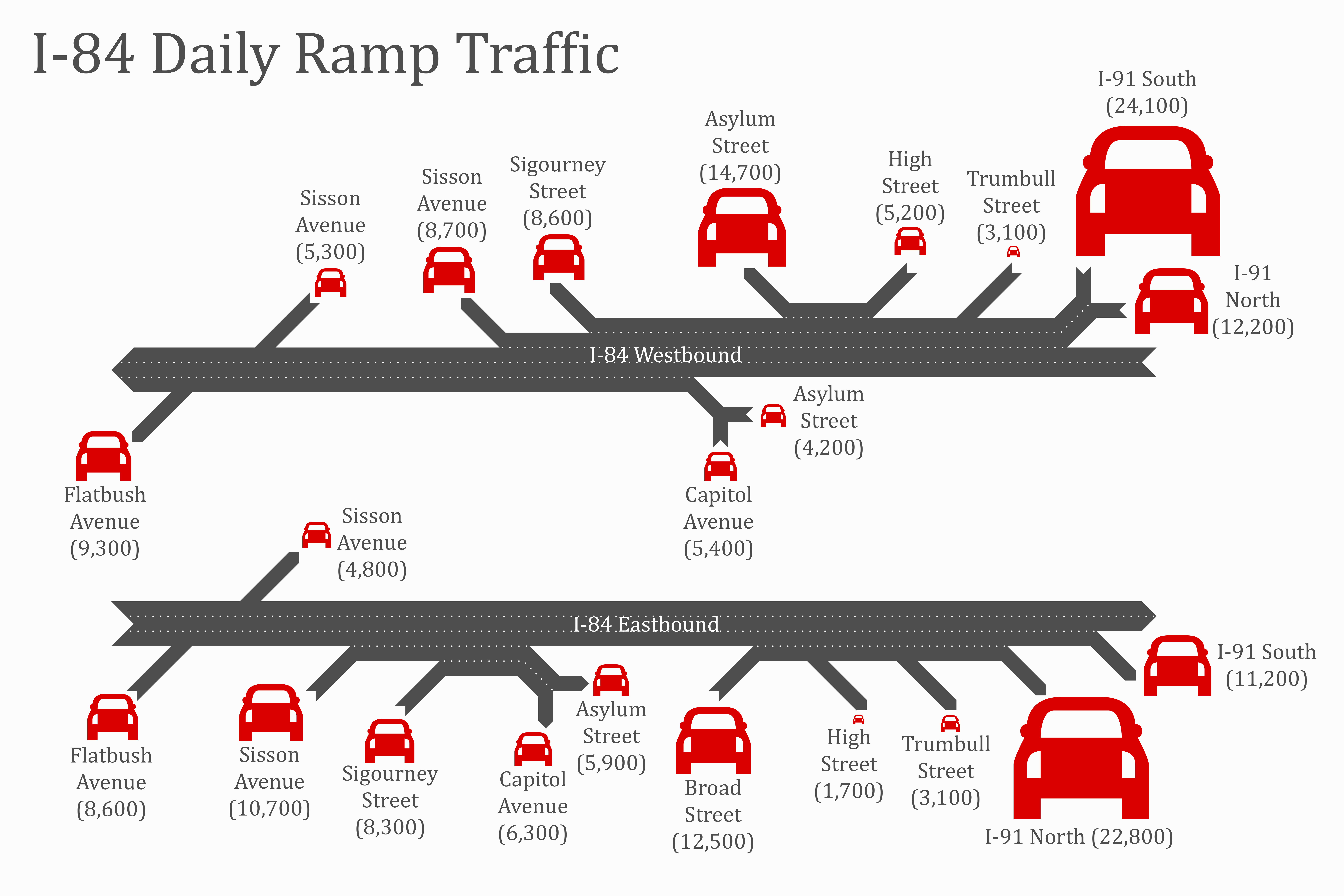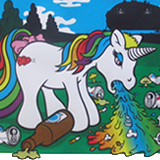|
Baronjutter posted:Are they building it the same way as that Vancouver replacement video we had posted in the thread a few months ago? Where they just slide in the new bridge for minimum delays (but way higher costs) ? Yup. The costs aren't that much higher, actually, since the staging is so much simpler and you spend a lot less on maintenance and protection of traffic. Some states are using ABC for pretty much everything now, and they're approaching cost parity.
|
|
|
|

|
| # ? May 26, 2024 17:16 |
|
Here's an article on the pedestrian crossing buttons in Australia. http://theconversation.com/sublime-design-the-pb-5-pedestrian-button-26232 I don't know if there are plans to update them in the future but no doubt there'll be a new system in capital cities sometime in the future: quote:We are more likely to thump this instantly recognisable design, on a daily basis, than to give it much thought. The PB/5 pedestrian button, a type of “Audio-Tactile Pedestrian Detector” (ATPD), is a successful Australian design that has been populating towns and cities across Australia since 1984 and exported to countries including Ireland, the US, New Zealand and Singapore.
|
|
|
|
Some more diagrams. Tell me how I did!  The only graphic design tips I get from my boss are "your arrows look like cocks."
|
|
|
|
In the second one I would have just used numbers because your 1000's units do not "feel" like 1/10 of your 10,000's units, so in order to get anything out of it I'm doing all sorts of math in my head. Also that font is bad and you should feel bad.
|
|
|
|
Cichlidae posted:Some more diagrams. Tell me how I did! I wonder if having different colors for incoming and outgoing traffic would add clarity. Instead of red and blue for the different sizes (which my gut says isn't necessary since the two cars are so much bigger), say red for entering and blue for leaving. I don't feel strongly about this, but you might want to play with the numbers some; maybe perhaps add a third size There's a notion that for a group of more than three or four members you have to count to see how many there are, but we're able to immediately recognize smaller groups. There's a lot of groups of >5 blue cars that could be cut down with an intermediate 5,000 yellow car, leaving a bigger red car for the real significant inputs and outputs.
|
|
|
|
Devor posted:In the second one I would have just used numbers because your 1000's units do not "feel" like 1/10 of your 10,000's units, so in order to get anything out of it I'm doing all sorts of math in my head. I can understand putting numbers alongside the figures, but I want this to be something people will understand in the blink of an eye. Maybe I could go with variable-size dots or something. Everyone at the office likes the font, but then again, we're all engineers. dupersaurus posted:I wonder if having different colors for incoming and outgoing traffic would add clarity. Instead of red and blue for the different sizes (which my gut says isn't necessary since the two cars are so much bigger), say red for entering and blue for leaving. I think I'll go with a scaled symbol, in that case. There's really no distinction between 'incoming' and 'outgoing,' because most of the ramps are some indeterminate mix of both. The message I want to get across is "holy hell, some of these ramps carry a ton of traffic, and some others could be removed with almost no impact."
|
|
|
|
I'd much rather just have actual numbers rather than colour coded car icons I have to add up.
|
|
|
|
Baronjutter posted:I'd much rather just have actual numbers rather than colour coded car icons I have to add up. Seriously, stop being afraid of numbers. Just round to 5k, 13k, etc. If you construct a venn diagram of: 1. People who are liable to bitch about you closing a ramp 2. People who will actually view this display at some point 3. People who can't handle numbers easily you are left with an intersection of 0. It sounds like your audience is illiterate impatient people who nonetheless can be swayed by good data. And that's not a smart fight.
|
|
|
|
If you're going to do symbol units, just use a portion of the large symbol instead of the little symbols (i.e.: 25000 would be 2 1/2 car symbols). Either that, or shrink the main symbol by a matching percentage (i.e.: 25000 would be 2 big and a half-sized big symbol). Much easier to understand.
|
|
|
|
Varance posted:If you're going to do symbol units, just use a portion of the large symbol instead of the little symbols ... Much easier to understand.
|
|
|
|
Varance posted:If you're going to do symbol units, just use a portion of the large symbol instead of the little symbols (i.e.: 25000 would be 2 1/2 car symbols). Either that, or shrink the main symbol by a matching percentage (i.e.: 25000 would be 2 big and a half-sized big symbol). Much easier to understand. If nothing else, it would be nice to compare having fractions of symbols with the current map, as well as having it be purely numerical.
|
|
|
|
Is your intent to communicate or to bamboozle? If the later, use this infographic. If the former, please pick another format.
|
|
|
|
Cichlidae posted:I think I'll go with a scaled symbol, in that case. There's really no distinction between 'incoming' and 'outgoing,' because most of the ramps are some indeterminate mix of both. The message I want to get across is "holy hell, some of these ramps carry a ton of traffic, and some others could be removed with almost no impact." Fractional symbols are definitely the way to go. It's much easier to understand four and a half cars than four big cars and five little cars. I thought that the graphics were fairly informative, but lacked in narrative. I mean this kindly as possible, but it takes too much interpretation to figure out what you're trying to say. These graphics might be great for discussing an issue with an informed audience, but aren't persuasive.
|
|
|
|
Version two:
|
|
|
|
Looks good, but the Sigourney onramp looks like it would encourage weaving.
|
|
|
Cichlidae posted:Some more diagrams. Tell me how I did! The peak/off-peak pie, consider if you can have the angle of the slices present the time-span the traffic takes place in, and the relative surface area of the slices represent the amount of traffic in each. The result would be that the "peak" slice is narrow, but sticks far out to have 1/3 of the total pie area. That might better communicate "1/6th of the day gets 1/3rd of the total volume." Also for the through/non-through, maybe use a straight and turning road lane with relative widths for the traffic volumes, posisbly improving visual readability. These might also just make things look more busy and be no more helpful.
|
|
|
|
|
http://usa.streetsblog.org/2014/07/01/8-monster-interchanges-that-blight-american-cities/ Here are some very bad and depressing interchanges.
|
|
|
|
Version 2 is much better. Also:Baronjutter posted:Looks good, but the Sigourney onramp looks like it would encourage weaving.
|
|
|
|
Cichlidae posted:Version two: Much better. Is it worth breaking down by time or (for instance) are the morning and evening rushes basically mirror images?
|
|
|
|
Cichlidae posted:Version two: See, there ya go! Much better.
|
|
|
|
It might work even better if you played with the font sizes so the fonts are larger for the higher numbers.
|
|
|
|
Baronjutter posted:http://usa.streetsblog.org/2014/07/01/8-monster-interchanges-that-blight-american-cities/ I dunno man, most of those seem like reaches. Heck, a few are even stacks (despite the article calling them 'cloverleaf'), which are the most compact complete interchanges you can build. It's not like we go out of our way to run over neighborhoods. If you want to blame someone in Milwaukee, keep in mind that they had to beef up those interchanges to handle extra traffic from a freeway they leveled downtown. You can blame the rich folk in the city center for imposing their will on the poor outside, as they've done for at least half a century. mamosodiumku posted:It might work even better if you played with the font sizes so the fonts are larger for the higher numbers. It'd be interesting to try that, but I'm already running low on space. I think having just the scaled symbol should be enough.
|
|
|
|
All of your information is there, but it can't be quickly seen and parsed. Here's how I would do it Horizontal bar graph, one bar each for total volume and volume past Union Station Horizontal bar, same size as total volume, split between peak and off peak Horizontal bar graph on the right side of the page, one bar for cars per hour at peak and one for cars per hour off peak Lines from the peak part of the peak/off-peak bar expanding the peak bar to a bar showing through/non through Vertical bar graph with volumes per ramp shown and busiest/least busy highlighted at the bottom And a quick MSPaint layout because that probably makes no sense 
|
|
|
|
Cichlidae posted:I dunno man, most of those seem like reaches. Heck, a few are even stacks (despite the article calling them 'cloverleaf'), which are the most compact complete interchanges you can build. It's not like we go out of our way to run over neighborhoods. If you want to blame someone in Milwaukee, keep in mind that they had to beef up those interchanges to handle extra traffic from a freeway they leveled downtown. You can blame the rich folk in the city center for imposing their will on the poor outside, as they've done for at least half a century. You're looking at them from a different perspective then the site Cichlidae. Those are considered bad on the basis of how much they disrupted/blocked off local neighborhoods or amenities, how much they broke up the street grid, and sheer size of them; and not on their engineering/design merits. Though I will admit some of the ones at the ends do seem a bit of a stretch, but the one where a university campus is surrounded by highways definitely counts.
|
|
|
|
Ok i want to kick whoever designed this rest stop. You can't really see it on google maps (and street view is too old to have it) but the entrance to the rest stop itself is riiighht on the other side of a hill that has its apex about where the marker is. When you exit the highway you are coming to the top of the hill and can't see the entrance, so when you are going around 50 mph off of the on ramp and get to the top of the hill, you can't slow down quickly enough to make it across the frontage road. Hell, you can even see the road is literally coated in rubber and tire marks from people who had to stop suddenly to make it in time. In addition, I-30 in Dallas has signs everywhere along it in between 35 and 45 that 45 has a left hand exit. It, in fact has a right hand exit :|.
|
|
|
|
|
Speaking of awful rest stops, I'd like to share a local one. http://goo.gl/maps/nJFN7 The whole thing was just rebuild and the northbound ramp was replaced with an identical, stop-controlled ramp that's maybe 10 feet long. It regularly backs up traffic for miles because there's no fast and safe way to get on the highway from that ramp. Extending the ramp would put it close to the exit ramp after the bridge, but it's so bad that I have to assume that there are protected wetlands of to the right that prevented it from being extended.
|
|
|
|
GWBBQ posted:Speaking of awful rest stops, I'd like to share a local one. Oh, the Merritt... It's not about wetlands there it's about there being no safe room to expand anything there, and the rest ares being designed around when there was still no median at all and cars were obeying a 35 mph speed limit.
|
|
|
|
Nintendo Kid posted:Oh, the Merritt... It's not about wetlands there it's about there being no safe room to expand anything there, and the rest ares being designed around when there was still no median at all and cars were obeying a 35 mph speed limit. The entire length of the Merritt has the right-of-way to expand to 4 lanes in each direction.
|
|
|
|
It's the bridges, isn't it?
|
|
|
|
GWBBQ posted:The entire length of the Merritt has the right-of-way to expand to 4 lanes in each direction. And the contours to still be deadly as gently caress. Chemmy posted:It's the bridges, isn't it? Yes, very much so.
|
|
|
|
Cichlidae posted:Version two: Definitely better, but I would have gone with bars rather than size of car icon to represent the volume. Length is easier to parse visually than area. You could even make the bars out of cars or something cute, just make sure the lengths are accurate. Also, if you're going to be doing many more of these, I highly recommend reading some books by Edward Tufte.
|
|
|
|
Lead out in cuffs posted:Definitely better, but I would have gone with bars rather than size of car icon to represent the volume. Length is easier to parse visually than area. You could even make the bars out of cars or something cute, just make sure the lengths are accurate. Good plan. I used to be so much better at this stuff, but so many skills have lapsed since I became an engineer. ----- I've been looking around the country and the world, and it's depressing how bad our infrastructure is here. Like literally depressing - I have no hope for the future. Connecticut is completely hosed from a transportation perspective, and the vultures are moving in to try to make a quick buck off of people's misery. We'll never have the money to make things right, we'll never have the political will to make things right, and everything is so mired in conflicts of interest and hidden agendas that we'd be better off wiping the slate clean and starting from scratch.
|
|
|
|
Cichlidae posted:I've been looking around the country and the world, and it's depressing how bad our infrastructure is here. Like literally depressing - I have no hope for the future. Connecticut is completely hosed from a transportation perspective, and the vultures are moving in to try to make a quick buck off of people's misery. We'll never have the money to make things right, we'll never have the political will to make things right, and everything is so mired in conflicts of interest and hidden agendas that we'd be better off wiping the slate clean and starting from scratch. I basically paraphrase this paragraph as an opening to every public meeting that I hold Edit: it really cuts down on the people complaining about sidewalks
|
|
|
|
Cichlidae posted:We'll never have the money to make things right, we'll never have the political will to make things right, and everything is so mired in conflicts of interest and hidden agendas that we'd be better off wiping the slate clean and starting from scratch. PoliticsInTheUS.txt
|
|
|
|
Since this thread also covers transit, figured this report would be of interest. Basically researchers from UC Berkley did a comprehensive analysis of over 50 'fixed guideway' transit systems from 1974 to 2008 to create an accurate ridership forecasting model. While some of their finding is obvious, you want to run it in dense built up areas with expensive parking, the sole design factor that has affect on ridership isnt. It seems grade separation has the greatest influence on ridership. Not speed, frequency, or reliability. When I get through the entire 262 page report Ill post how exactly much of a difference grade separation makes. Additionally they also posted their model as a spreadsheet for anyone to use; put in some basic info about the line and the area around stations and itll give you ridership estimates on both the line and the entire system. And if anyone doesnt want to muck about the full report the article that I found this out from is here.
|
|
|
|
That's a really cool report, Marxist Undead. I usually just glaze over when I see big dry reports like this but I'm actually digging into it. Mannnnn I so want something like that transitmix route-builder coupled with local population/job data and this spread sheet to plan out fantasy transit systems and get decent ridership estimates. Cichlidae, or anyone else who knows ballpark figures, I'm hoping to get some rough estimates on yearly costs for road upkeep. For example "a typical 2 lane road costs, on average, X per year in upkeep, Y to initially build". I'm trying to get a handle on the up-front costs (construction) and then the ongoing costs of various types of roads and highways. Just something general like the cost per km of a 2 lane rural road, a 2 lane road with sidewalks, a 4 lane road, a surface highway, an elevated highway. Basically if life was simcity how much would the various road tiles cost to build and how much would their upkeep cost? Baronjutter fucked around with this message at 19:31 on Jul 10, 2014 |
|
|
|
Baronjutter posted:That's a really cool report, Marxist Undead. I usually just glaze over when I see big dry reports like this but I'm actually digging into it. Mannnnn I so want something like that transitmix route-builder coupled with local population/job data and this spread sheet to plan out fantasy transit systems and get decent ridership estimates. I've been thinking about it for a while, and while there's really no simple answer (it depends so much on the region, geography, and ROW), if we're just talking about ballpark figures, WITHOUT ROW COSTS OR BRIDGES: 2-lane rural road, from scratch: $50,000/km + $2,000/year amortized maintenance 2-lane suburban road with sidewalks: $150,000/km + $3,000/year amortized maintenance 4-lane road: $250,000/km + $5,000/year amortized maintenance 4-lane rural surface highway: $1,000,000/km (assuming no heavy earthwork needed) + $10,000/year amortized maintenance 4-lane elevated freeway: All structures, so it's closer to a billion bucks a km + $1,000,000/year amortized maintenance
|
|
|
|
That's awesome thanks!
|
|
|
|
Cichlidae posted:I've been thinking about it for a while, and while there's really no simple answer (it depends so much on the region, geography, and ROW), if we're just talking about ballpark figures, WITHOUT ROW COSTS OR BRIDGES: A billion a km? The 10 mile or so LBJ Express project here in Dallas where they are excavating that entire length 40 feet deep while maintaining 3-4 lanes of thru traffic is 3 billion. Is cement and labor really that more expensive in the Northeast?
|
|
|
|

|
| # ? May 26, 2024 17:16 |
|
Ron Pauls Friend posted:A billion a km? The 10 mile or so LBJ Express project here in Dallas where they are excavating that entire length 40 feet deep while maintaining 3-4 lanes of thru traffic is 3 billion. Is cement and labor really that more expensive in the Northeast? Replacing 2km of I-84 is gonna cost us $5B, so consider yourself lucky.
|
|
|



































